Is your Ninja blender loud? I love Ninja blenders. They...
Read More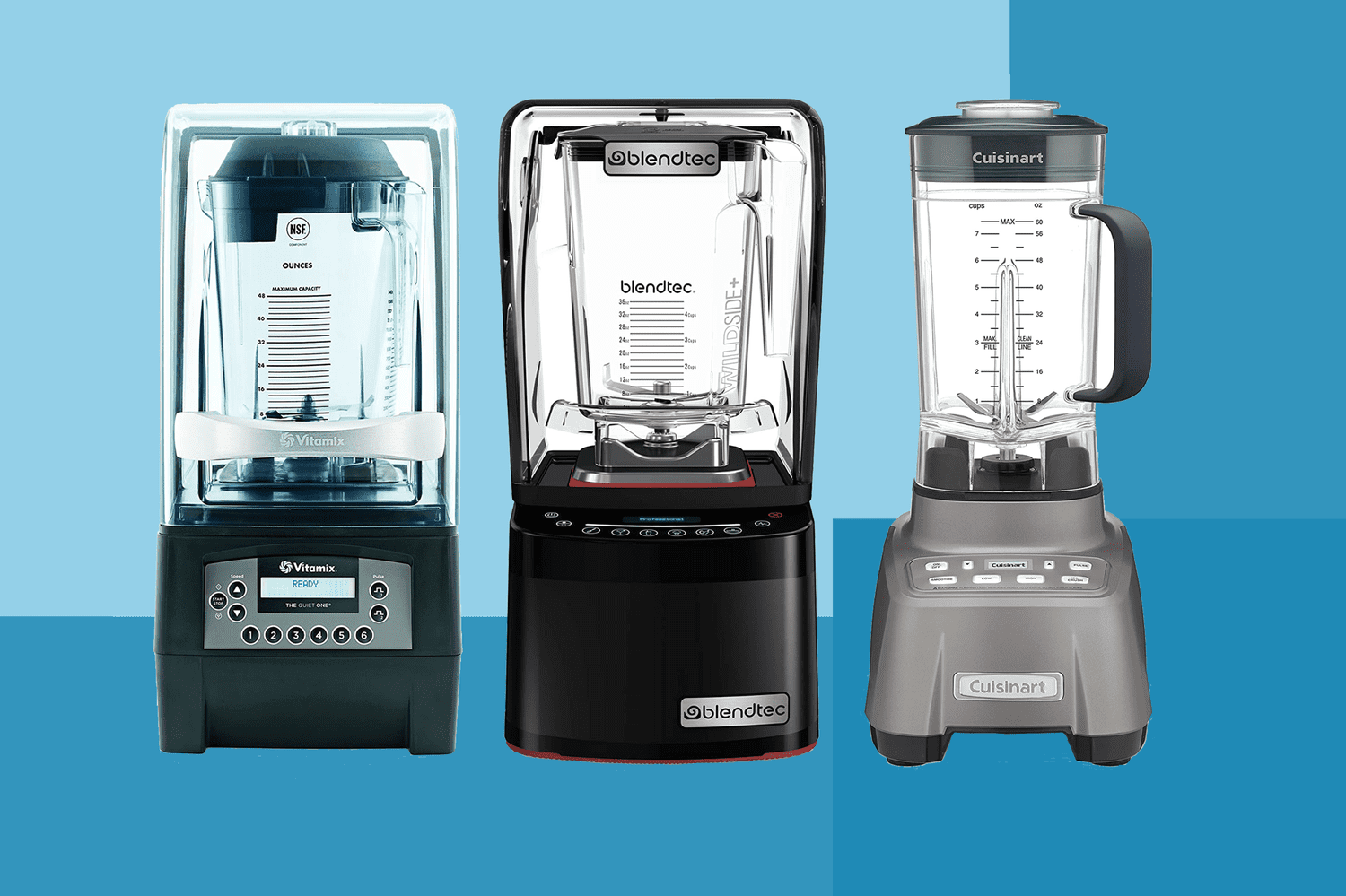
Silent blenders, also known as quiet blenders, are a type of blender that operate with minimal noise. They are designed to provide the power and performance of a traditional blender, but with reduced noise levels that make them ideal for use in quiet environments such as homes, offices, and apartments.
Silent blenders typically have a range of features that contribute to their quiet operation, such as insulated motor housings, noise dampening technology, and sound-reducing containers. These features help to minimize the noise produced by the blender while still allowing it to blend ingredients effectively.
Silent blenders are suitable for a variety of blending tasks, including making smoothies, soups, sauces, and nut milks. They come in a range of sizes and styles to suit different needs and preferences, from compact personal blenders to larger countertop models.
In this article, we will explore the benefits of using a silent blender, the features to look for when choosing a model, and some of the best silent blenders currently available on the market.
Do silent blenders exist?
Yes, silent blenders do exist! While no blender can be completely silent, many blender manufacturers have developed models that operate with much less noise than traditional blenders. These blenders are often referred to as quiet or silent blenders and are designed with noise reduction features to minimize the amount of sound they produce during operation.
Some of the features commonly found in silent blenders include soundproof containers, noise dampening technology, and insulated motor housings. These features help to reduce the noise produced by the blender while still allowing it to blend ingredients effectively.
Silent blenders are ideal for use in quiet environments such as homes, offices, and apartments where noise can be a concern. They are suitable for a variety of blending tasks and are available in a range of sizes and styles to suit different needs and preferences.
Why can't blenders be silent?
Blenders cannot be completely silent because of the way they operate. Blenders work by using a powerful motor to spin blades at high speeds, which chops and blends ingredients into a smooth consistency. The sound produced by a blender comes from several sources, including the motor, the blades cutting through the ingredients, and the turbulence caused by the blending process.
Even blenders with noise reduction features such as soundproof containers, noise dampening technology, and insulated motor housings will produce some amount of sound. The amount of noise produced will depend on factors such as the power and speed of the motor, the type and quantity of ingredients being blended, and the design and construction of the blender.
While it is possible to reduce the amount of noise produced by a blender, it is not possible to eliminate it completely. However, many manufacturers have developed blenders with noise reduction features that significantly reduce the amount of sound produced, making them much quieter than traditional blenders.
Are there blenders that don't make noise?
While there are no blenders that are completely silent, there are some blenders that produce less noise than others. These blenders are often marketed as “quiet” or “silent” blenders and are designed with noise reduction features to minimize the amount of sound they produce during operation.
Some of the features that can contribute to a quieter blending experience include insulated motor housings, noise dampening technology, and sound-reducing containers. These features help to reduce the amount of noise produced by the blender while still allowing it to blend ingredients effectively.
However, it’s important to note that even the quietest blenders will produce some noise during operation, especially when blending harder or more difficult-to-blend ingredients. So while there are blenders that are designed to produce less noise, there are no blenders that are completely silent.
Can you silence a blender?
It’s not possible to completely silence a blender, but there are some steps you can take to reduce the amount of noise it produces. Here are some tips:
- Use a noise-reducing blender: Some blenders are designed with noise reduction features, such as insulated motor housings and sound-dampening technology, which help to reduce the amount of noise they produce.
- Use a rubber mat: Place a rubber mat or dampening pad under the blender to help absorb some of the vibrations and reduce the amount of noise.
- Use a sound enclosure: Some blenders come with a sound enclosure that fits over the blender to reduce the amount of noise produced during blending.
- Blend in short bursts: Instead of running the blender continuously, try blending in short bursts. This will help to reduce the amount of time the blender is running and the amount of noise produced.
- Use low power settings: When possible, use low power settings to reduce the speed and noise of the blender.
While these steps can help to reduce the amount of noise produced by a blender, it’s important to note that there will still be some amount of noise.
How many decibels is a silent blender?
The term “silent blender” is a bit of a misnomer, as no blender can be completely silent. However, there are some blenders that are designed with noise reduction features and are marketed as “quiet” or “low-noise” blenders. The decibel (dB) level of a blender depends on several factors, including the type and power of the motor, the speed setting, and the ingredients being blended.
Some quiet blenders have noise levels ranging from 60-80 decibels, which is significantly quieter than traditional blenders that can produce noise levels of up to 100 decibels or more. To give you some perspective, 60 decibels is roughly the noise level of a normal conversation, while 80 decibels is similar to the noise level of heavy traffic.
It’s important to note that the actual noise level of a blender can vary depending on the specific model and usage. It’s always a good idea to check the manufacturer’s specifications for the noise level of a particular blender model before purchasing.
What are some of the quietest blenders?
Some of the quietest blenders on the market are:
- Vitamix Quiet One: This blender is specifically designed to operate at a lower decibel level than other commercial-grade blenders. It features a noise-reducing cover, a vibration dampening pad, and an insulated motor.
- Blendtec Professional 800: This blender is equipped with a sound enclosure and noise-reducing air filtration system, which help to reduce the noise produced during blending. It also has a powerful motor that can easily blend tough ingredients.
- Breville Super Q: This blender features a noise-reducing dome that helps to minimize the sound produced during blending. It also has a powerful motor and a range of speed settings to suit different blending tasks.
- Hamilton Beach Professional Quiet Shield Blender: This blender has a noise-reducing shield that reduces the noise produced during blending. It also has a powerful motor and a range of speed settings to suit different blending tasks.
- KitchenAid Pro Line Series Blender: This blender features a noise-reducing design and an insulated motor, which help to reduce the amount of sound produced during blending. It also has a powerful motor and a range of speed settings to suit different blending tasks.
It’s important to note that while these blenders are among the quietest available, they are still not completely silent. The level of noise produced will also depend on the ingredients being blended and the speed and power settings being used.
Benefits of using silent blenders
There are several benefits to using a silent blender:
- Reduced noise: The primary benefit of a silent blender is that it produces less noise compared to traditional blenders. This makes it easier to use in quiet environments, such as early in the morning or late at night, without disturbing others in your home or neighbors.
- More versatile: The reduced noise level of a silent blender means that it can be used in a wider range of settings, such as offices, apartments, and dorm rooms, without causing a disturbance.
- Better for your ears: Using a blender that produces less noise can help protect your hearing, especially if you use the blender frequently or for long periods of time.
- Better for your nerves: The loud noise of traditional blenders can be stressful and annoying to some people, especially if they have sensory sensitivities. A silent blender can help to reduce stress and make blending more enjoyable.
- Better for your appliances: Traditional blenders can cause vibrations that may damage nearby appliances or furniture. Silent blenders are designed to reduce these vibrations, which helps to protect your appliances and furniture from damage.
Which is quieter Ninja or Vitamix?
When it comes to noise level, both Ninja and Vitamix blenders can vary depending on the specific model and usage. However, generally speaking, Vitamix blenders tend to be quieter than Ninja blenders. Vitamix blenders are designed with a powerful motor that is housed in a sound-dampening container, which helps to reduce the noise level during operation.
Ninja blenders, on the other hand, may produce more noise due to their high-speed motor and lack of noise reduction features. That being said, there are some Ninja models that are designed with noise reduction features and can be quieter than other models. It’s always a good idea to check the manufacturer’s specifications for the noise level of a particular blender model before purchasing.
Which is quieter Nutribullet or Ninja?
In general, Nutribullet blenders tend to be quieter than Ninja blenders. Nutribullet blenders are designed with a smaller and less powerful motor, which tends to produce less noise during operation. Ninja blenders, on the other hand, are designed with a powerful motor and high-speed blades, which may produce more noise during blending.
However, the actual noise level can vary depending on the specific models of Nutribullet and Ninja blenders, as well as the ingredients being blended and the length of blending time. It’s always a good idea to check the manufacturer’s specifications and reviews from other users to get a sense of the noise level of a particular blender model before purchasing.
How to use silent blenders
Using a silent blender is similar to using a regular blender. Here are some general steps for using a silent blender:
- Assemble the blender: Make sure all the parts of the blender are properly assembled, including the pitcher or container, lid, and blades.
- Add ingredients: Add the ingredients you want to blend into the container. Be sure not to exceed the maximum fill line on the container.
- Secure the lid: Place the lid on the container and make sure it is securely in place.
- Choose the setting: Select the appropriate setting on the blender for the ingredients you are blending. Most silent blenders have different speed or pulse settings, so choose the one that works best for your recipe.
- Start blending: Turn on the blender and let it run until the ingredients are blended to the desired consistency. It’s important to follow the manufacturer’s instructions for how long to blend different types of ingredients.
- Turn off the blender: Once the blending is complete, turn off the blender and unplug it from the power source.
- Serve or store: Pour the blended ingredients into a glass or container and enjoy immediately or store in the fridge for later use.
It’s important to always refer to the manufacturer’s instructions for specific instructions on how to use your specific silent blender model.
Factors to consider when choosing the best silent blenders
When choosing the best silent blender, there are several factors to consider, including:
- Noise level: Look for blenders that specifically advertise themselves as silent or quiet. Check the decibel rating to determine how quiet the blender actually is. Most silent blenders will have a decibel rating of around 60-80 dB.
- Motor power: Consider the motor power and blade design of the blender. A more powerful motor and sharper blades will blend ingredients more quickly and efficiently, which can reduce the amount of time the blender needs to be in use.
- Capacity: Consider the capacity of the blender pitcher. Choose a size that fits your needs, as a smaller pitcher may be more suitable for personal use, while a larger pitcher may be better for family or group use.
- Features and settings: Look for features like different blending speeds, pulse settings, and programmable settings that allow for customized blending. Some blenders may also come with pre-set programs for specific recipes.
- Brand reputation and warranty: Consider the brand reputation and warranty of the blender. Look for brands with good customer service and a reputation for quality products. Check for warranties that will protect your investment in the event of any defects or problems.
- Price: Silent blenders can be more expensive than regular blenders. Consider your budget and choose a blender that fits your needs and preferences while staying within your budget.
By considering these factors, you can choose the best silent blender that fits your needs and preferences.
How to clean silent blenders
Cleaning a silent blender is similar to cleaning any other blender. Here are some steps you can follow to clean your silent blender:
- Unplug the blender and disassemble the parts. Most blenders have a removable pitcher, lid, and blades. Take these parts apart and place them in the sink.
- Rinse the parts in warm water to remove any leftover food particles. Avoid using hot water, as it can damage the plastic parts of the blender.
- Add dish soap and warm water to the blender pitcher. Use a soft sponge or brush to scrub the inside of the pitcher and blades. Pay extra attention to any hard-to-reach areas, such as the grooves between the blades.
- Rinse the blender parts thoroughly with warm water to remove all soap residue.
- Dry the blender parts with a clean towel or air dry them. Avoid using abrasive materials or towels that can scratch the plastic parts.
- Wipe the base of the blender with a damp cloth to remove any spills or splatters.
- Reassemble the blender and store it in a dry, cool place.
It is important to clean your blender after every use to prevent bacteria buildup and prolong the life of the blender.
How to maintain silent blenders properly
Here are some tips on how to maintain a silent blender properly:
- Always refer to the manufacturer’s instructions for cleaning and maintenance guidelines.
- Regularly clean the blender after each use to prevent bacteria buildup and prolong the life of the blender.
- Check the blender’s motor and blades periodically to ensure they are working properly. If you notice any unusual noises or vibrations, it may be a sign that the motor or blades need to be replaced.
- Avoid overfilling the blender pitcher beyond the maximum fill line, as this can cause the motor to strain and potentially damage the blender.
- Use the blender for its intended purpose only. Some blenders are designed for specific tasks, such as blending ice or making nut butter. Using the blender for tasks beyond its capabilities can cause damage to the blender.
- Store the blender in a dry, cool place to prevent dust buildup and exposure to moisture.
- Use a voltage regulator if necessary to ensure the voltage supplied to the blender is not too high or too low, which can damage the motor.
- Replace the blender’s parts as necessary, such as blades or gaskets, to ensure they are functioning properly.
By following these tips, you can maintain your silent blender in good condition and enjoy its quiet operation for a long time.
Troubleshooting about silent blenders
Here are some common issues that may arise when using a silent blender and how to troubleshoot them:
- Blender won’t turn on: Check that the blender is plugged in and the power outlet is working. If the blender has a safety feature, ensure that the pitcher is correctly aligned with the base. Try pressing down on the pitcher or tightening the blender’s components.
- Blender is leaking: Check that the pitcher is correctly aligned with the base and that the sealing gasket is in place and not damaged. Avoid overfilling the pitcher, which can cause the blender to leak. Replace any damaged parts, such as the gasket.
- Blender is making strange noises: Turn off the blender and check that the blades are properly attached and not damaged. Try cleaning the blades and pitcher. If the issue persists, it may indicate a problem with the motor or bearings and require professional repair.
- Blender is overheating: Check that the blender is not overfilled, which can cause the motor to strain and overheat. Allow the blender to cool down for a few minutes before resuming use. If the issue persists, it may indicate a problem with the motor or require professional repair.
- Blender is not blending properly: Ensure that the blades are properly attached and not dull or damaged. Avoid overfilling the pitcher, which can cause the blender to struggle to blend. Try adding more liquid or adjusting the speed settings.
If none of these troubleshooting tips resolve the issue, refer to the manufacturer’s instructions or contact their customer support for assistance.
Silent blenders - FAQs
Here are some frequently asked questions (FAQs) about offset serrated knives:
The decibel level of a silent blender can vary depending on the model, but typically they range from 50-80 decibels.
Generally, silent blenders are more expensive than regular blenders due to the specialized technology used to reduce noise.
Yes, most silent blenders are designed to handle tough ingredients like ice and frozen fruits. However, it is important to check the manufacturer’s specifications before purchasing a blender to ensure that it can handle the ingredients you plan to use.
Not necessarily. Silent blenders can have just as much power as regular blenders, but they are designed to operate more quietly due to specialized sound-reducing technology.
No, silent blenders are not inherently harder to clean than regular blenders. The cleaning process is generally the same, but it is important to refer to the manufacturer’s instructions for specific cleaning guidelines.
It depends on the specific model of blender and the intended use. Some silent blenders may have additional features, such as food processing or mixing capabilities, but it is important to refer to the manufacturer’s specifications before attempting to use the blender for other purposes.
Conclusion
In conclusion, silent blenders are a great option for those who want to enjoy the convenience of a blender without the loud noise that often comes with it. They use specialized technology to reduce noise, making them perfect for early morning or late-night blending.
When choosing a silent blender, it is important to consider factors such as power, capacity, and ease of cleaning. While they may be more expensive than regular blenders, their quiet operation and other benefits make them a worthwhile investment for many users.
Related Posts
Blender Noise Reduction: 7 Suggestions For Making A Blender Quieter
Most blender owners investigate noise reduction at some point. Blenders...
Read MoreBest Quiet Blenders: 10 Machine Reviews That Will Help You Pick Your Perfect One.
Blenders can be workhorses in the kitchen of the home...
Read MoreWhy Trust Us
You will find what you are looking for at Jody's Bakery. From classic to luxury brands, you'll find both. We will help you to select appliances that fit your needs, budget and lifestyle. Whether you want to stop by to learn more — or plan to make a major purchase — we’ll treat you like family and assist you every step of the way. Shop with us today to receive friendly and experienced help along the way.












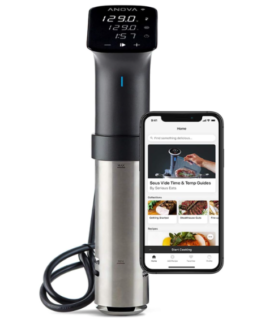
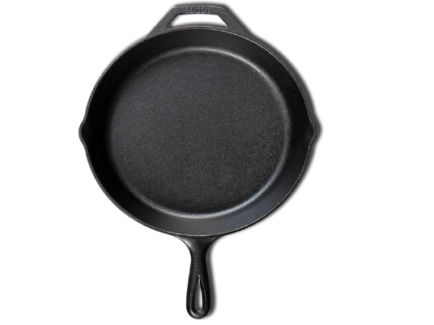
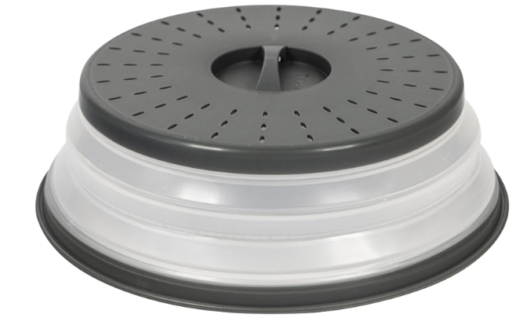
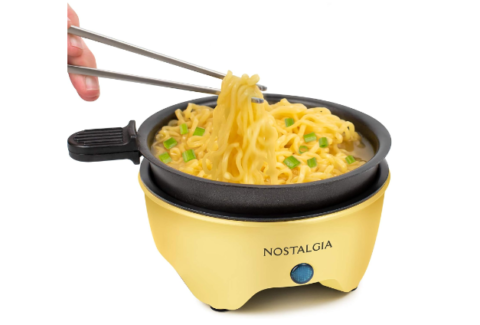
… [Trackback]
[…] Read More to that Topic: jodysbakery.com/do-silent-blenders-exist/ […]
… [Trackback]
[…] Find More Info here on that Topic: jodysbakery.com/do-silent-blenders-exist/ […]
… [Trackback]
[…] Information to that Topic: jodysbakery.com/do-silent-blenders-exist/ […]
Excellent goods from you, man. I’ve understand your stuff previous to and you’re just too fantastic.
I actually like what you’ve acquired here, certainly like
what you are stating and the way in which you say it. You make
it enjoyable and you still care for to keep it sensible.
I can not wait to read far more from you.
This is really a wonderful site.
Do you have a spam problem on this site; I also am a blogger, and I was wondering your situation;
we have developed some nice practices and we are looking to exchange solutions with others, why not shoot me an e-mail if interested.
Wow, that’s what I was searching for, what a data!
present here at this web site, thanks admin of this
website.
Western Native Seed makes a speciality of seeds of plants which are native to the Rocky Mountains, western Great Plains, and adjoining areas.
Our objective is to provide prime quality seed for
the native plant enthusiast and to advertise the use
of native plants for gardening, landscaping, and revegetation. We’ve
been in enterprise for over 20 years and provide
all kinds of various wildflower, grass, tree, shrub, and wetland species.
We consider native plants to be those which existed in North America prior to
European settlement and naturally occur in a given habitat.
A species that’s native to Colorado may not be native to different western states
and should or might not be native to all components of Colorado.
Native plants are a great alternative for the easy purpose that they’re nicely adapted to
their setting and are likely to thrive without too much fuss.
Once established, they will provide a stupendous, low-maintenance and lengthy-lived show
that’s both ecologically acceptable and environmentally
sound. If you aren’t already rising natives, why not begin at this time by deciding on one or more of the many native
species we now have to supply. We hope you enjoy them as
a lot as we do.
I’m amazed, I have to admit. Rarely do I come across a blog
that’s both equally educative and engaging, and without a doubt, you have hit the nail on the head.
The issue is something that too few men and women are speaking intelligently about.
Now i’m very happy I found this during my hunt for something
concerning this.
… [Trackback]
[…] Read More Info here on that Topic: jodysbakery.com/do-silent-blenders-exist/ […]
I’m pretty pleased to find this great site. I want to
to thank you for ones time for this particularly fantastic read!!
I definitely savored every bit of it and i also
have you book-marked to see new information in your site.
That is very interesting, You are an excessively
skilled blogger. I’ve joined your feed and stay up for seeking more of your wonderful
post. Also, I’ve shared your web site in my social networks
Western Native Seed specializes in seeds of plants that are native to
the Rocky Mountains, western Great Plains, and
adjoining areas. Our aim is to provide prime quality seed
for the native plant enthusiast and to promote using native plants for gardening, landscaping, and revegetation. We’ve
been in enterprise for over 20 years and provide a wide variety of different wildflower,
grass, tree, shrub, and wetland species. We consider native plants to be those which existed in North America previous to European settlement and
naturally happen in a given habitat. A species that is native to Colorado will not
be native to different western states and should
or may not be native to all components of Colorado. Native plants are an amazing alternative for
the straightforward cause that they’re properly tailored to
their surroundings and are prone to thrive without a lot fuss.
Once established, they will present a ravishing, low-upkeep and lengthy-lived display
that’s each ecologically acceptable and environmentally sound.
If you aren’t already rising natives, why not start as we speak by deciding on one
or more of the various native species now we have to offer.
We hope you take pleasure in them as a lot as we do.
Hello There. I found your blog using msn. This is an extremely
well written article. I will be sure to bookmark it and return to read more of your useful information. Thanks
for the post. I will definitely return.
Attractive component of content. I just stumbled upon your website
and in accession capital to assert that I acquire actually loved account your weblog posts.
Anyway I will be subscribing on your feeds or even I achievement you access persistently fast.
Thanks very interesting blog!
Valuable info. Lucky me I discovered your site by accident, and
I’m stunned why this twist of fate did not took place earlier!
I bookmarked it.
It is really a great and helpful piece of info. I’m happy that
you shared this useful info with us. Please stay us up to date like this.
Thanks for sharing.
Hello, i read your blog occasionally and i own a similar one
and i was just wondering if you get a lot of spam
comments? If so how do you protect against it, any plugin or
anything you can recommend? I get so much lately it’s driving
me crazy so any support is very much appreciated.
Hi, Neat post. There is a problem with your website
in web explorer, would check this? IE nonetheless is the market
chief and a huge section of other folks will omit your fantastic writing because of this problem.
Hey There. I found your blog using msn. This is a really well written article.
I’ll be sure to bookmark it and return to read more of your useful information. Thanks for the post.
I’ll certainly comeback.
… [Trackback]
[…] Read More Info here to that Topic: jodysbakery.com/do-silent-blenders-exist/ […]
I have been surfing online greater than 3 hours these
days, but I by no means discovered any fascinating article like
yours. It’s beautiful price sufficient for me. Personally, if all web
owners and bloggers made good content material as
you probably did, the web will be much more helpful than ever before.
With havin so much content and articles do you ever run into any problems of plagorism or copyright
infringement? My site has a lot of exclusive content
I’ve either authored myself or outsourced but it looks like a lot of it is popping it up
all over the web without my permission. Do you know any techniques to
help prevent content from being stolen? I’d really appreciate it.
… [Trackback]
[…] Read More Information here to that Topic: jodysbakery.com/do-silent-blenders-exist/ […]
… [Trackback]
[…] Read More to that Topic: jodysbakery.com/do-silent-blenders-exist/ […]
excellent put up, very informative. I wonder why the opposite
specialists of this sector don’t notice this. You must continue your writing.
I am confident, you have a great readers’ base already!
Hi, i read your blog from time to time and i own a similar one and i was just curious if you get a lot of spam remarks?
If so how do you stop it, any plugin or anything you can suggest?
I get so much lately it’s driving me mad so any assistance is very much
appreciated.
… [Trackback]
[…] Read More on that Topic: jodysbakery.com/do-silent-blenders-exist/ […]
Good day! This is my 1st comment here so I just wanted to
give a quick shout out and tell you I really enjoy reading
your articles. Can you suggest any other blogs/websites/forums that deal with the same subjects?
Thank you!
… [Trackback]
[…] Find More to that Topic: jodysbakery.com/do-silent-blenders-exist/ […]
… [Trackback]
[…] Read More on that Topic: jodysbakery.com/do-silent-blenders-exist/ […]
Unquestionably believe that which you stated. Your favorite reason seemed to
be on the internet the easiest thing to be aware of.
I say to you, I certainly get annoyed while people consider
worries that they just do not know about. You managed to hit the nail upon the top
and also defined out the whole thing without having side-effects , people could take a signal.
Will probably be back to get more. Thanks
… [Trackback]
[…] Here you will find 51263 additional Information on that Topic: jodysbakery.com/do-silent-blenders-exist/ […]
Hi would you mind letting me know which webhost you’re using?
I’ve loaded your blog in 3 different internet browsers and I must say this blog loads a
lot quicker then most. Can you recommend a good internet hosting provider at a fair price?
Thanks a lot, I appreciate it!
Hello, i feel that i noticed you visited my web site so i got
here to go back the prefer?.I am attempting
to to find issues to enhance my web site!I suppose its adequate to
make use of some of your concepts!!